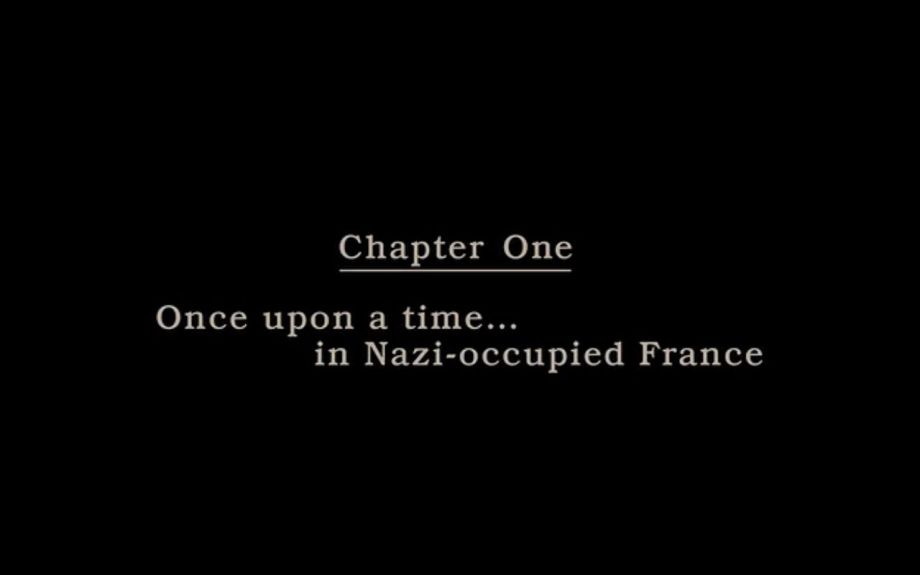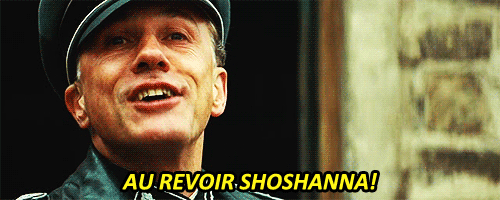History is complex. There is no sole truth to any particular historical event; however, those unpopular narratives of history are often forgotten. Film takes these forgotten histories and adds a creative element that portrays a bigger message about the present. Inglourious Basterds and Midnight in Paris create wishful histories within these films that not only tackle invention but also tackle a wishful, retrospective perspective of the nostalgic viewer. Historical films recreate this wishful history in order to create a false nostalgia that reveals our feelings about the present.
Film takes the open, free opportunity associated with creativity in order to present history on the big screen. Film has the ability to “animate the past, to reconstruct the great events of history through the performance of the actor and the evocation of atmosphere and milieu” (Rosenstone 11). Take Quentin Tarantino’s Inglourious Basterds. On the surface, this film is about the Nazis and Jews during the Holocaust of World War II. This film introduces itself as a sort of written book with its opening line of “Chapter One.” Tarantino decided to present the film in this form, which presents the film as a narrative or a story. What changes this representation is the following text, “Once upon a time…”
This completely juxtaposes the feeling that this is in anyway related to written history’s “factual” text. The use of “Once upon a time” presents how this story will be presented: as more of a story than a documentary approach. While Inglourious Basterds does present the film as a “fairy tale,” both films introduce historical figures as a reference to the history era or time period.

Hilter is presented as a historical figure in Inglourious Basterds. He is used in this film as a way to hold a historical event as well as tell a story that an audience can connect to.
In a way, these historical figures help these films to reanimate the past. For example, by including Ernest Hemingway in Midnight in Paris, the viewers can interact with a past and an iconic literary figure in a way beyond the written text surrounding that history.

The real Ernest Hemingway. This photo would most likely be in a history book with a description of what he was like.
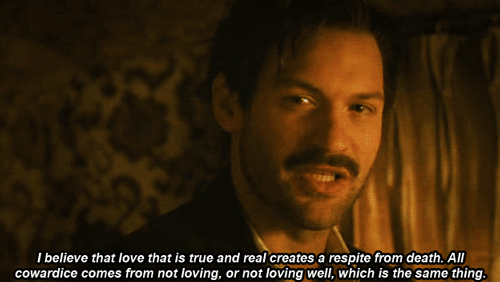
The Ernest Hemingway as portrayed by Corey Stoll. The represents the highest of stereotypes written about Hemingway.
The old saying that history is the story of the victor suggests that perspectives can change the history that is widely known. In Midnight in Paris, Woody Allen uses stereotypes of these artists in order to present their characters within the film. For example, the Fitzgeralds fall into every word that is written about them, according to Gill at least. Allen creates Zelda Fitzgerald (Allison Pill) as the jumpy, exciting, drunk party girl that the history books write her as.
Also, Allen presents Zelda as the force that is holding F. Scott Fitzgerald (Tom Hiddleston) back from truly great writing. What challenges this film is the fact that this film is portrayed by actors of the present. In essence, all the literary figures could be portrayed as their polar opposites in the film. Film has the opportunity to present alternate sides to popular history that can present new information about the history that is known.
Film invention has been the biggest issue studied by historians, as well as their biggest argument against the medium. These inventions are made in order to give separate interpretations of historical events. For example, Inglourious Basterds represents a film that is completely invented and a wishful interpretation of World War II.
While the history of World War II is widely known, the result of the war might not be what the people wanted. Tarantino uses Inglourious Basterds to present that wishful, retrospective history. For example, the “basterds” are an invented group of bandits that roam freely through France targeting Nazis and executing them.
Even though the group is fictitious, the idea of Jewish Americans wanting to march into France to avenge the persecuted Jews is a retrospective feeling felt by those Jews who wished they could have been there to be brave and kill Nazis and avenge the European Jews. This wishful history is most greatly presented in the scene where Colonel Hans Landa (Christoph Waltz) makes a deal with Lt. Aldo Raine and “the Little Man” in the end of the film.
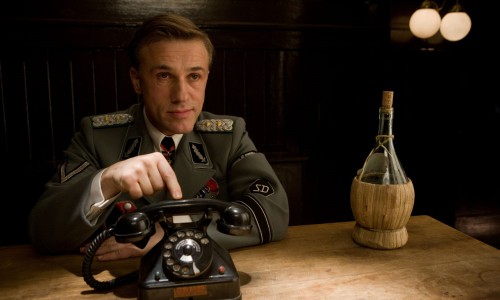
Colonel Hans Landa attempts to make a deal with the basterds to which he says “what will the history books read?”
As the Colonel first presents his deal, Lt. Raine is skeptical, and shows his skepticism by facial expressions and an anecdotal Tennessee story. His largest argument is the feeling of “what looks to good to be true, usually is.” The colonel refutes this by examining history, “what shall the history books read.” By involving history books, the film is self-reflexive by pointing out that the history books read a different story than is seen in this film.
In Midnight in Paris, Gill and Adrianna both believe they were born too late and are nostalgic for a time before their own. In Inglourious Basterds, the film is nostalgic for a different result to a historical event.
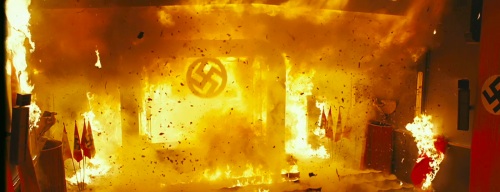
This final fire scene represents what we might wished had happened to all the Nazi leaders during WWII.
However, both these films present alternate histories as well as incorporate invention to tell the story. This can lead to a sense of false nostalgia for the viewer to an event that they have only experience indirectly through history books or history on screen. In Midnight in Paris, prior to Gill’s time-travel, he dwells heavily upon the ‘20s as if he lived there and knows that this time period is significantly better than the present. However, Gill has only experienced and formed this opinion by reading about Paris in the 1920s in books. This is an example of nostalgia through an indirect experience. Once Gill finally time-travels to his favorite time period, he finally gets his direct experience and indulges in his nostalgia for the era.
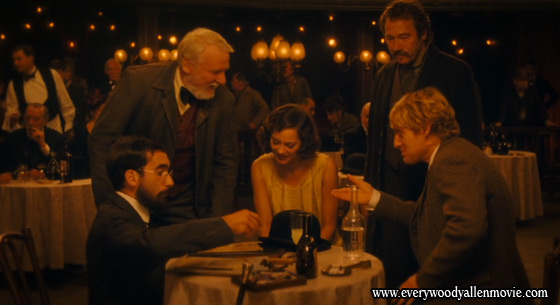
Gill and Adrianna travel even further back in time and Gill decides that this is not an era he wants to live in. He urges Adrianna that this is not the place to be because the 1920s is.
While Gill has overcome the false nostalgia by directly experiencing these events, the audience of the film can now connect and remember this past without experiencing it. By creating these figures in image form, the audience can feel as if they now know the figures for what they were through the visual representation. The problem is that this is a film created in the present or long after the historical figures lived. “In reality, the viewers are ‘not there,” and can never be. The filmic re-enactment provides not a direct access to ‘how things were’ but rather a guide to how the past might be understood” (Bell and McGarry 12). Likewise, filmmakers have creative freedom over their films.

